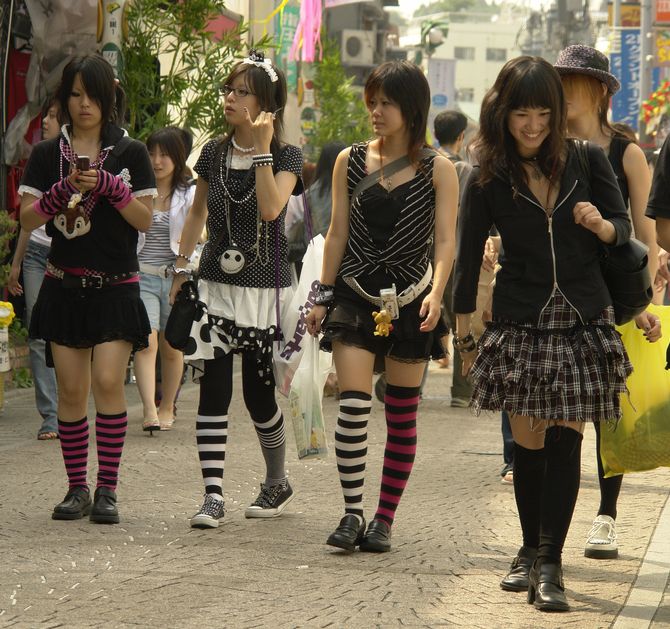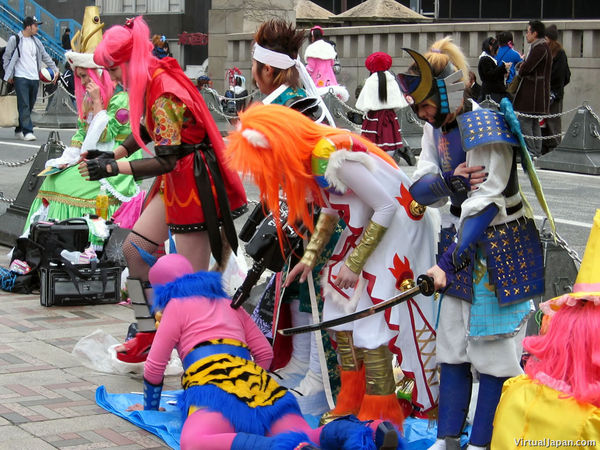Harajuku is a collective name for a set of unique styles from Japan.
The fashion was named after the train station it started in, Harajuku Square,Tokyo.

While Harajuku is the name generally given to the eccentric styles people dress up and wear there,there are more specific subcultures. Some of these are kawaii, cosplay, ganguro, visual kei, and lolita***. Click on the links for details.
***In Japan, the word "lolita" has no inappropriate negative connotations like it does in the western world. Instead, this style is about being demure, modest, and youthful. The clothes look like they are from the Victorian Era and are very doll like, with lace, tights, bows, and etc. The look is absolutely not intended to sexualize young girls, but to express innocence and femininity.
A Brief History
Harajuku began to grow as community during World War 2, when American soldiers, government officials, and families took up residence in an area near Harajuku called Washington Heights. Soon, curious teenagers started gathering to experience the more American culture in that area. In 1958, the residential Central Apartments were built and quickly inhabited by fashion designers, models, and photographers. When the Olympics came to Tokyo in 1964, Harajuku gained popularity and a more concrete culture. Teenagers who frequented the area, called the Harajuku-Zoku (Harajuku tribe) began to develop unique styles and subcultures, and the train station evolved into the cultural phenomenon it is today.
Artists and Influences
Milk
As with any culture, harajuku trends come and go with the different designers, brands, and celebrities. One of the most famous brands in the industry is called Milk. Milk was opened in 1970 by Hitome Okawa, in an alleyway off of Central Apartments. The store was a tiny hole in the wall, run by someone who had never designed clothes before. Luckily for Hitome,who had no credits or experience, the curious youth crowding Tokyo were eager to try something new, and in no time at all, Milk was a key player. The brand combined punk with cute, creating new, imaginative styles that Harajuku immediately fell in love with. Hitome also took trends from the United States and re-worked them to fit into Japanese society. The store also gained popularity after it was visited by David Bowie and John Lennon.
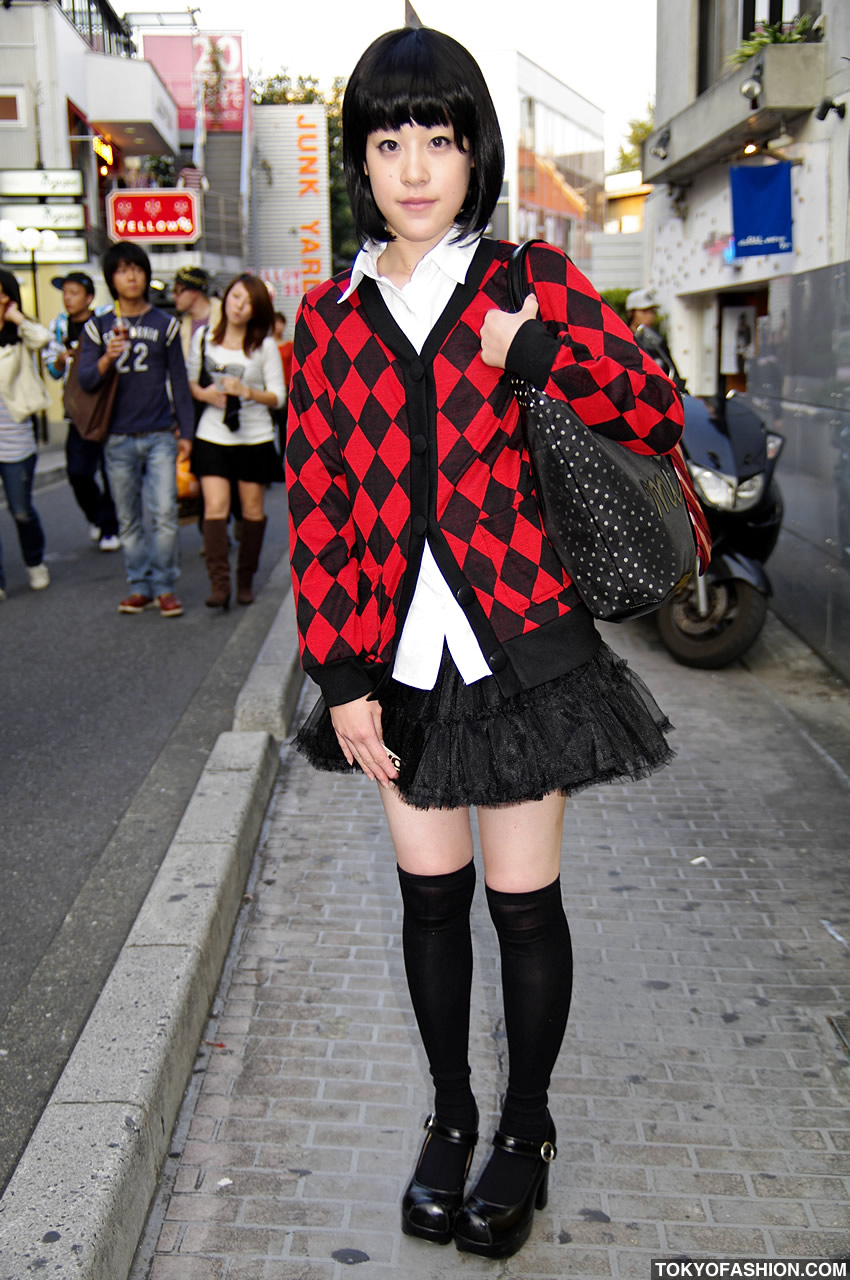
A Japanese girl wearing Milk Clothing
Cream Soda
Launched in 1976, the cream soda label was created by Masayuki Yamazaki as a unique version of the 1950's Elvis style. He researched design in London, where they had adopted leather jackets and tough-guy looks inspired by biker culture. When Masayuki returned to Tokyo, he presented a collection completely different from anything Japan had seen before. It was an enormous success, and he began distributing the clothes through a selective night club-shop called Pink Dragon. The intrigue surrounding the shop made the brand famous, and though Masayuki was seldom seen in public, he was elevated to celebrity status.
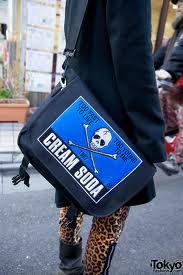
A Cream Soda Bag with the Iconic Skull and Crossbones
Comme Des Garcons
While Comme Des Garcons is not actually a Harajuku brand, it's styles have been used an inpsirations and templates for Harajuku designers since the early 1970's. It's main designer, directer, and corporate president is Rei Kawakubo. She launched the brand in 1969, and it quickly grew in popularity. The clothes had distinctive, unusual shapes and fabric, and were nearly all monochromatic blacks until 1988. When foriegn journalists became interested in her brand, Rei began advertising the designs in Europe. Her first show In Paris was in 1981, and there a reporter dubbed the style Hiroshima Chic. She is still an active, inspirational designer today, even being called the new Coco Chanel.
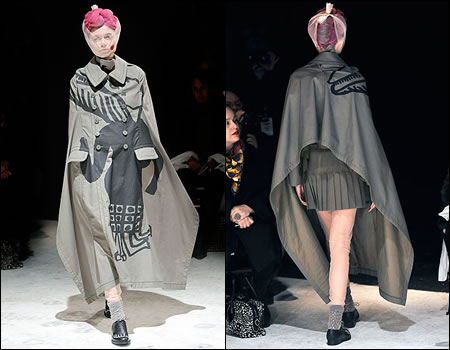
Comme Des Garcons models
Home
|



